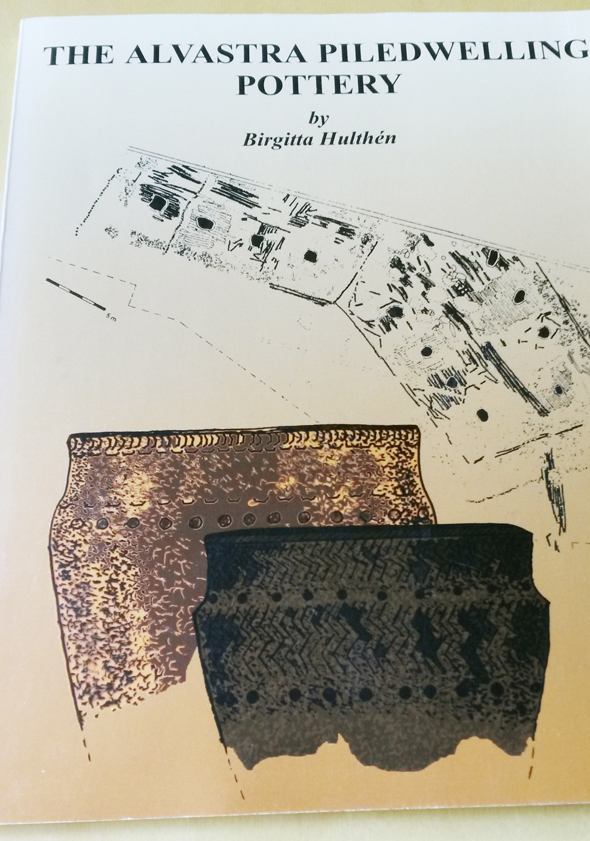
In Sweden the summer holidays are already starting to come to an end. All the members of our team will be back at work next week and we will start publishing blog posts to keep you updated on the progress of the project. In the meantime we have a guest post written by Birgitta Hulthén. It is a summary of Birgitta’s book shown in the picture above.
Reference: Hulthén, B., 1998. The Alvastra piledwelling pottery. Museum of National Antiquities monografier 5. Stockholm.
Summary written by Birgitta Hulthén
In the 1980s the author was a member of the team engaged in the then resumed Alvastra pile dwelling excavations. From the author’s perspective as a ceramics expert it also gradually stood out as a necessary step to devote substantial interest to the, at the time, many still unopened boxes harbouring the assemblages generated during the excavations conducted by Dr. O Frödin more than 50 years earlier. Consequently a comparatively large primary recording of the ceramics assemblage stored at SHM was carried out by the author. Based on the outcome of the primary recording those parts of the assemblages deemed to be of special interest were subjected to elaborate analysis at the Laboratory for Ceramic Research (then headed by the author), at the department for Quaternary Geology, Lund University.
The following topics are highlighted, resulting in new intriguing questions and results:
- Evidence of a “beginner’s stage” of Pitted Ware ceramics production.
- An observable, continuous improvement of the ceramics craft within the time span of comparatively few decades.
- Ceramic properties clearly demonstrating existing and not existing transactions between the pile dwelling and other important sites in eastern Sweden.
- A modern and partly new set of explanations to the seemingly puzzling problem concerning the paradoxically disproportionate ratio between the number of original vessels, reflected by the number of unique characteristic sherds, and the limited, total pottery assemblage constituting only a small fraction of the original ceramics mass. Further, why are complete vessels in most cases only found in graves?
This book (75 pages) is available free of charge (except postage and
packing) to scholars and other proven professionals within the field of
archaeology as well as to relevant museum personnel. Students
working with Alvastra-related projects may also apply for a free copy.
For further information please make a request to the following e-mail
address: order@kerarkeo.se
Bli först att kommentera